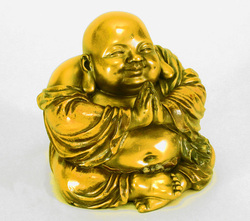 In the current enthusiasms for “mindfulness” and yoga, the practice of Zen can seem intimidating or foreign. It’s often not clear what it means to take the path of Zen. Our tradition offers a path of liberation, tested and refined over dozens of generations. But what does that actually look like? The practice of Zen first and foremost means zazen, seated meditation. I recommend three levels of practice. First, practice with a group that meets regularly, what we call sangha. Meditation in a group feels different than on your own, and often feels more powerful. In meditating in a group, we support each other’s practice. We also make dharma friends, and begin to develop spiritual community, which is invaluable along the Way. Second, as best you can, work toward developing a daily practice. At first, regularity is more important than the length of time. If you can only sit for five or ten minutes a day, it’s a great start. Eventually working up to twenty or thirty minutes a day is a worthy goal. First thing in the morning works best for many people, but whenever you can get on the cushion is just fine. Third, when you are ready, try out longer retreats. It’s great to check out a daylong retreat, to get a taste of what can happen in a longer stretch of meditation practice. If and when you can, try going to a sesshin, a multi-day silent retreat under the guidance of a teacher and with senior students to lead the way. Retreat practice changes lives, no joke. Many people who are starting out in meditation practice ask for book recommendations, and there are some I suggest (look here). But consider starting to practice without filling your head with words and ideas, rather just relying on your own experience. There is a time and place for reading and study, but it can be a good thing to approach practice without our usual mediation by “experts.” Finding a teacher who is a good fit for you is a tremendous blessing in this path. A teacher can help when you hit inevitable rough patches or blind alleys. She can offer encouragement and spiritual friendship. And she can help guide you through the sometimes strange landscapes we encounter in the practice. It’s possible these days to have a teacher online, or to have multiple teachers, and all kinds of arrangements can work. But finding a primary teacher who can offer guidance along the way is most helpful for most people. I recommend a teacher who is authorized in a recognized lineage; I’m suspicious of people who are authenticated only by themselves. Once you have established a regular practice with a teacher and a group, the next step is to consider taking the precepts, the Bodhisattva vows. Through our commitment to ethical living, we make sure we don’t just practice for our own peace of mind, but also to benefit others. The precepts are not prohibitions or commandments, but rather a description of how to live in order to find and spread joy. Ultimately, true practice happens in the midst of our lives, while we tend to a sick child or pay our bills or write a letter to our senator. All our practice on the cushion and with our teacher and with the precepts is in support of the practice of daily life. The real measure of our practice is in how we respond to life as it is, in our ability to be present and helpful. Our task is to show up, to allow our heart to break, over and over. To mess things up, over and over, but to keep an open heart, and to find a way to do some good in the world.
0 Comments
Leave a Reply. |
Details
AuthorMegan Rundel is the resident teacher at the Crimson Gate Meditation Community in Oakland, CA.. Archives
April 2020
Categories
|

 RSS Feed
RSS Feed